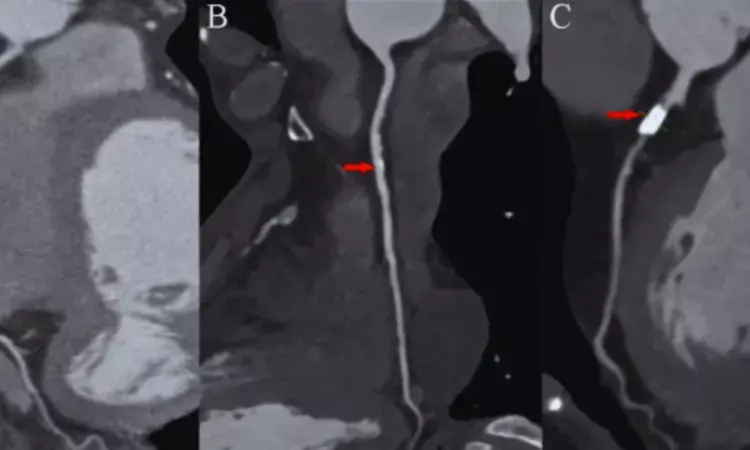- Home
- Medical news & Guidelines
- Anesthesiology
- Cardiology and CTVS
- Critical Care
- Dentistry
- Dermatology
- Diabetes and Endocrinology
- ENT
- Gastroenterology
- Medicine
- Nephrology
- Neurology
- Obstretics-Gynaecology
- Oncology
- Ophthalmology
- Orthopaedics
- Pediatrics-Neonatology
- Psychiatry
- Pulmonology
- Radiology
- Surgery
- Urology
- Laboratory Medicine
- Diet
- Nursing
- Paramedical
- Physiotherapy
- Health news
- Fact Check
- Bone Health Fact Check
- Brain Health Fact Check
- Cancer Related Fact Check
- Child Care Fact Check
- Dental and oral health fact check
- Diabetes and metabolic health fact check
- Diet and Nutrition Fact Check
- Eye and ENT Care Fact Check
- Fitness fact check
- Gut health fact check
- Heart health fact check
- Kidney health fact check
- Medical education fact check
- Men's health fact check
- Respiratory fact check
- Skin and hair care fact check
- Vaccine and Immunization fact check
- Women's health fact check
- AYUSH
- State News
- Andaman and Nicobar Islands
- Andhra Pradesh
- Arunachal Pradesh
- Assam
- Bihar
- Chandigarh
- Chattisgarh
- Dadra and Nagar Haveli
- Daman and Diu
- Delhi
- Goa
- Gujarat
- Haryana
- Himachal Pradesh
- Jammu & Kashmir
- Jharkhand
- Karnataka
- Kerala
- Ladakh
- Lakshadweep
- Madhya Pradesh
- Maharashtra
- Manipur
- Meghalaya
- Mizoram
- Nagaland
- Odisha
- Puducherry
- Punjab
- Rajasthan
- Sikkim
- Tamil Nadu
- Telangana
- Tripura
- Uttar Pradesh
- Uttrakhand
- West Bengal
- Medical Education
- Industry
Study Finds 1.42-Fold Increased Mortality Risk in Non-Obstructive CAD Patients

China: A recent multicenter study conducted in China has revealed that even non-obstructive coronary artery disease (CAD)-traditionally considered less severe than obstructive CAD—carries a substantial long-term risk of death. The research, published in Scientific Reports, was led by Dr. Zengfa Huang from the Department of Radiology, Tongji Medical College, the Central Hospital of Wuhan, Huazhong University of Science and Technology, and colleagues.
The study assessed the prognostic value of non-obstructive CAD using coronary computed tomography angiography (CTA), a non-invasive imaging technique increasingly used in clinical cardiology for early detection of coronary artery disease. Researchers examined the outcomes of 7,320 patients who were suspected of having CAD and underwent CTA at three medical centers in Wuhan between June 2011 and December 2015.
Based on their CTA findings, patients were categorized into three groups: those with no evidence of CAD, those with non-obstructive CAD, and those with obstructive CAD. Over a median follow-up period of eight years, 611 participants died from various causes. The study’s primary objective was to evaluate how these different types of CAD correlated with all-cause mortality.
The key findings include the following:
- Patients without coronary artery disease (CAD) had the lowest annual mortality rate at 0.50 per 100 person-years.
- Individuals with non-obstructive CAD showed a higher annual death rate of 1.31 per 100 person-years.
- Patients with obstructive CAD experienced the highest annual mortality rate at 2.18 per 100 person-years.
- Kaplan-Meier survival analysis demonstrated a progressive increase in mortality risk across the three groups, with statistical significance.
- Multivariate Cox regression analysis showed that non-obstructive CAD was associated with a 1.42-fold increased risk of all-cause mortality compared to no CAD (HR: 1.42).
- Obstructive CAD was linked to an even higher mortality risk, with a 1.87-fold increase compared to no CAD (HR: 1.87).
These findings challenge the common perception that non-obstructive CAD is benign and highlight the need for heightened clinical awareness. Although it does not significantly restrict blood flow, non-obstructive CAD may still contribute to adverse cardiovascular outcomes and overall mortality.
The authors emphasized the clinical relevance of their results, suggesting that non-obstructive CAD should not be underestimated during risk assessment and long-term management. They call for further studies to explore targeted strategies that could potentially improve the prognosis in this patient group.
The authors conclude, "Coronary CTA has proven to be a powerful tool in identifying patients at risk, not just those with severe arterial blockages, but also individuals with early-stage or mild coronary changes. This study reinforces the importance of comprehensive cardiovascular evaluation, even when CTA reveals only minimal arterial narrowing."
Reference:
Huang, Z., Chen, X., Wang, W., Du, X., Cao, B., Li, M., Yang, Y., Wang, X., Huang, J., Zhu, J., Zhao, X., & Wang, X. (2025). Prognostic value of non-obstructive coronary artery disease based on coronary computed tomography angiography in a long-term follow-up and multicenter study. Scientific Reports, 15(1), 1-8. https://doi.org/10.1038/s41598-025-04147-5
Dr Kamal Kant Kohli-MBBS, DTCD- a chest specialist with more than 30 years of practice and a flair for writing clinical articles, Dr Kamal Kant Kohli joined Medical Dialogues as a Chief Editor of Medical News. Besides writing articles, as an editor, he proofreads and verifies all the medical content published on Medical Dialogues including those coming from journals, studies,medical conferences,guidelines etc. Email: drkohli@medicaldialogues.in. Contact no. 011-43720751


